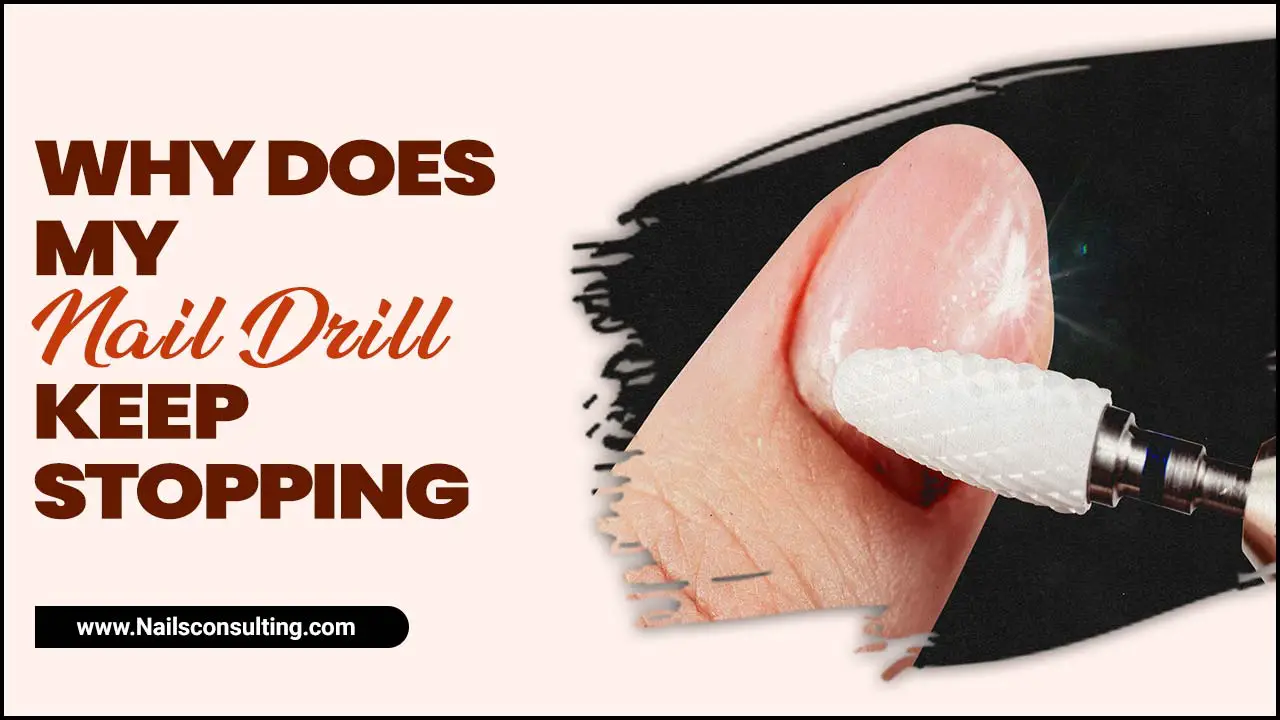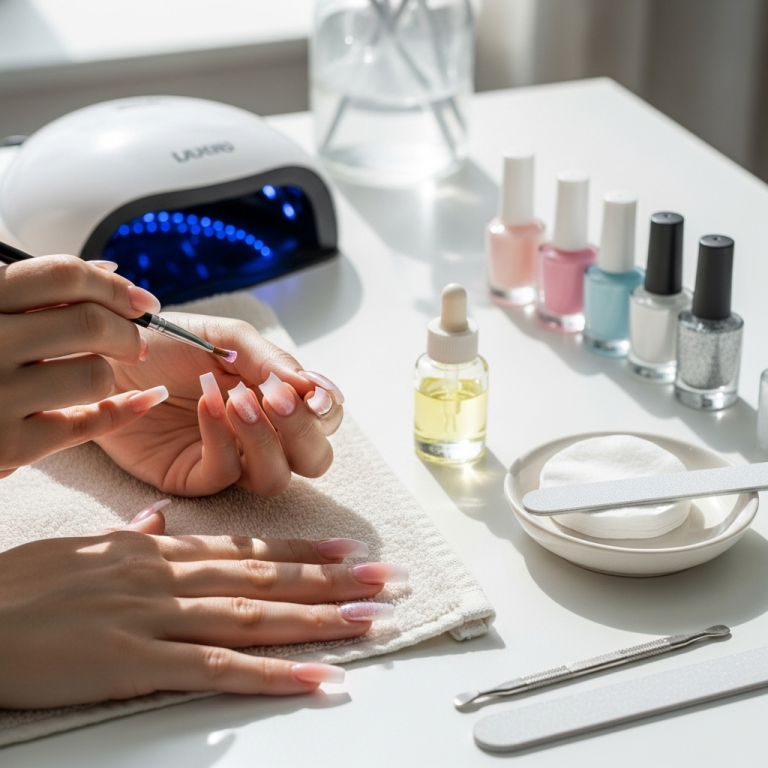Stamping nail art designs can be surprisingly simple and super fun for beginners! With just a few key tools and some practice, you can create beautiful, intricate patterns on your nails that look totally professional. We’ll walk you through everything you need to know to get started with stunning nail art.
Ever look at gorgeous, perfectly patterned nails and think, “There’s no way I could ever do that”? You’re not alone! Many of us admire intricate nail art but feel intimidated by the thought of creating it ourselves. But guess what? Stamping nail art makes it totally achievable, even if you’re just starting out. It’s like having your own mini printing press for your fingertips!
The magic of nail stamping lies in its ability to transfer detailed designs from a metal plate directly onto your nail with ease. It bypasses the need for a super steady hand or hours of freehand drawing. We’re going to break down exactly how to do it, sharing some genius, beginner-friendly ideas that will have you creating salon-worthy manis in no time. Get ready to unleash your inner nail artist!
What is Stamping Nail Art, Anyway?
Nail stamping is a technique that uses a stamper and scraper to pick up an image from an engraved metal plate and transfer it onto your nail. Think of it like a rubber stamp for your nails, but with way more intricate and stylish designs! This method is fantastic because it allows you to create complex patterns, geometric shapes, delicate florals, and so much more without needing years of artistic training.
It’s a popular choice for beginners because it offers consistent, clean results. Instead of trying to draw tiny lines or dots freehand, you’re using a pre-made design. This greatly reduces the frustration factor and boosts your confidence as you see those amazing images appear on your nails.
Why Stamping Nail Art is Perfect for Beginners
If you’re new to the nail art world, stamping is your secret weapon. Here’s why it’s so forgiving and fun:
- Ease of Use: The process is straightforward and designed for simple application.
- Precision: Achieve crisp, clean lines and detailed designs that are hard to replicate freehand.
- Speed: You can create a complex-looking design much faster than painting it yourself.
- Variety: There are thousands of designs available on stamping plates, offering endless creative possibilities.
- Affordability: While there’s an initial investment in tools, individual manicures can be very budget-friendly compared to salon visits.
- Consistency: Once you get the hang of it, your stamped designs will look uniformly perfect every time.
Essential Tools for Stamping Nail Art Success
To dive into stamping nail art, you’ll need a few key pieces of equipment. Don’t worry, they aren’t complicated or expensive! Most of these items are readily available online or at beauty supply stores.
1. Stamping Plates
These are metal discs or squares etched with various designs. They come in countless themes – from simple dots and lines to elaborate lace patterns, animals, and seasonal motifs. For beginners, it’s best to start with plates that have larger, bolder designs or simple geometric patterns. This makes them easier to align and less prone to smudging during transfer.
2. Stamping Polish
You’ll need a special polish designed for stamping. These polishes are highly pigmented and have a thicker consistency than regular nail polish. This allows them to pick up the fine details from the etching on the plate. While you can use some regular polishes, dedicated stamping polish gives the best, most opaque results.
Here’s a quick look at why specialized polish is a game-changer:
| Feature | Stamping Polish | Regular Nail Polish |
|---|---|---|
| Pigmentation | High, opaque colors | Varies, often sheerer |
| Formula Thickness | Thicker, designed to sit on the plate | Thinner, designed to spread and dry on nail |
| Detail Pickup | Excellent, picks up fine etchings | Can be difficult, may not pick up detail clearly |
| Drying Time | Dries quickly, aiding in transfer | Slower drying time |
3. Stamper and Scraper
This is the dynamic duo! The stamper is usually made of soft, squishy silicone (or sometimes jelly-like material) that picks up the design from the plate. The scraper, often a plastic card or metal tool with a firm edge, is used to remove excess polish from the plate, leaving the design clean for the stamper to pick up.
Look for a stamper with a good amount of “tack” (stickiness) and a medium-firm head. Some stampers have replacement heads, which is great for hygiene and trying different firmness levels.
4. Base Coat and Top Coat
A good base coat protects your natural nails from staining, especially when using dark or vibrant stamping polishes. A high-shine, quick-drying top coat is crucial for sealing your stamped design and giving your manicure a polished, long-lasting finish. It also helps to smooth over any slight texture from the stamping process.
5. Clean-up Tools
Mistakes happen! Having a small brush (like a fine-tip eyeliner brush or a dedicated clean-up brush), cotton swabs, and acetone (or non-acetone remover for sensitive skin) is essential for tidying up any polish that lands where you don’t want it.
Your First Stamping Nail Art Designs: Step-by-Step Guide
Ready to get stamping? Follow these steps for flawless results. Remember, practice makes perfect, so don’t get discouraged if your first attempt isn’t flawless!
- Prep Your Nails: Start with clean, dry nails. Apply a base coat and let it dry completely. You can also apply your desired base color polish at this stage if you want a colored background under your stamped design. Let this dry thoroughly – this is crucial! If your base color is still wet, the stamped image will smudge.
- Apply Stamping Polish: Pick a design from your stamping plate. Generously apply your opaque stamping polish directly over the chosen design. Don’t be shy with the polish; you want to fill the etching completely.
- Scrape Off Excess Polish: Immediately after applying the polish, use your scraper tool at about a 45-degree angle. With a firm, quick motion, scrape across the plate to remove all the excess polish. You want to leave the polish only in the etched lines of your design. A common beginner mistake is scraping too lightly or too many times, which can remove polish from the etching.
- Pick Up the Design: Instantly after scraping, position your stamper over the design. Gently roll or press the stamper onto the plate. The design should transfer onto the stamper’s surface. If it doesn’t transfer well, you might need to adjust your polish application, scraping technique, or the speed of your press.
- Stamp Onto Your Nail: Align the stamper over your nail where you want the design to be. Gently roll or press the stamper onto your nail. Again, a rolling motion is often best for curved nails to avoid distortion. Just like with the plate, press or roll straight down.
- Clean Up: Use your clean-up brush dipped in acetone to carefully remove any polish that got onto your skin or cuticles. This step makes a huge difference in the final look!
- Seal with Top Coat: Once your stamped design is on your nail and the polish is dry, apply a thin layer of quick-drying top coat. Be gentle! If you are too rough, you can drag the design. The top coat seals and protects your art, making it last longer.
Genius Beginner Stamping Nail Art Ideas
Now for the fun part – what designs should you try first? Start simple and build your confidence!
Simple Dots and Lines
This is the absolute easiest way to start. Many stamping plates have basic dot patterns (solid, hollow, scattered) and simple straight or curved lines. These are perfect for accent nails or for creating simple, modern manicures. You can use one color for versatility or try mixing and matching!
- How-to: Stamp a few dots along the cuticle, create a French tip line with a straight line design, or fill your whole nail with a scattered dot pattern.
Geometric Shapes
Triangles, squares, chevrons, and grids are fantastic for beginners. They are bold, graphic, and often forgiving if your alignment isn’t perfect. Geometric patterns look sophisticated and intentional.
- How-to: Stamp a single chevron on the tip of each nail, create a grid pattern across your nail, or randomly place different shapes for a modern mosaic look.
Floral Silhouettes
Many plates feature floral designs that are essentially outlines or silhouettes. These are much easier to pick up and transfer cleanly than intricate, detailed flowers. They give a delicate, feminine feel without requiring a steady hand.
- How-to: Stamp a single flower design on the side of your nail, repeat a small floral pattern across the whole nail, or use it as a border at the tip.
Animal Prints (Simplified)
Stamping plates often have simplified versions of leopard spots, zebra stripes, or snake prints. These are designed to be easy to pick up and place. Instead of trying to freehand those irregular shapes, stamping gives you perfect, repeatable patterns.
- How-to: Stamp leopard spots on an accent nail, use thin zebra stripes as a French tip alternative, or create a subtle snake print background.
Half-Moon or Accent Designs
Use smaller stamps to create designs on just a portion of your nail. This could be a half-moon shape at the cuticle, a stripe across the nail, or a small icon placed strategically. This method is less pressure because you only have to focus on a small area.
- How-to: Stamp a solid circle or crescent at the base of your nail for a “marbled” or retro look. This is often called a “negative space” design if you skip the polish color in the main nail area.
Layering Simple Designs
Once you get comfortable, you can try layering! For example, stamp a solid dot, then stamp a smaller, hollow dot on top of it. Or stamp a simple stripe and then a small star over it. The key is ensuring the first layer is completely dry before stamping the second image.
For a beautiful effect, try stamping a delicate lace pattern over a sheer nude polish. Or stamp bold geometric shapes for a modern, edgy look. You can find more inspiration and resources for stamping techniques on reputable beauty sites.
Tips for Perfect Stamping Every Time
Even with great ideas, a few expert tips can elevate your stamping game:
- Work Quickly: Stamping polish dries very fast. Once you apply it to the plate, you must scrape and stamp immediately.
- Don’t Press Too Hard: Whether scraping or stamping onto the nail, firm but gentle pressure is key. Too much force can damage the etching or smudge the design.
- Keep Your Tools Clean: Regularly clean your stamper head (usually by dabbing with a lint roller or sticky tape) and scrape off excess polish thoroughly. Clean your plates with acetone and cotton pads after each use.
- Practice on a Stamper Head: If you’re nervous about hitting your nail perfectly, practice stamping onto the stamper head itself, then transfer that practice stamp onto your nail. This lets you see how the image transfers before committing to your nail.
- Experiment with Angles: Try different scraping angles (around 30-60 degrees) and stamping pressures to see what works best for your tools and polishes.
- Consider a Clear Stamper: Many beginners find clear stampers incredibly helpful because you can see exactly where you’re placing the image on your nail, improving accuracy.
- Use a Lint Roller: A lint roller is your best friend for quickly cleaning excess polish off your stamper head between stamps. Just dab it on to lift the polish.
You can find great tips on nail care and techniques, like removing gel polish safely, from resources like the American Academy of Dermatology Association, which offers general advice on maintaining healthy nails. While they may not cover stamping directly, good nail health is fundamental for any nail art.
Troubleshooting Common Stamping Problems
Even the best nail artists encounter issues! Here’s how to fix some common stamping woes.
Problem: The design isn’t picking up onto the stamper.
Possible Causes & Solutions:
- Polish is too thin or not pigmented enough: Use thicker, highly pigmented stamping polish.
- Not enough polish on the plate: Apply a generous amount of polish to thoroughly cover the etching.
- Scraping too hard or too much: Scrape just once with firm pressure at a 45-degree angle to remove excess, leaving polish in the etching.
- Stamper not sticky enough: Ensure your stamper head is clean and “tacky.” If it’s too old or damaged, it might need replacing.
Problem: The design is smudging when transferring to the nail.
Possible Causes & Solutions:
- Base polish is not dry: This is the most common culprit! Always wait until your base polish is completely dry to the touch.
- Pressing too hard with the stamper: Use a gentle rolling motion or a light press instead of a hard downward push.
- Moving the stamper during the transfer: Align, then press or roll, and lift straight up without sliding.
Problem: The stamped image looks blurry or incomplete.
Possible Causes & Solutions:
- Plate is etched shallowly or damaged: Try a different plate or ensure you’re using the right pressure.
- Scraping technique: You may be removing too much polish from the etching with the scraper. Adjust your angle and pressure.
- Oversaturation of polish: Sometimes, too much polish can fill the etching in a way that it doesn’t transfer cleanly.
Problem: Polish is getting everywhere on my skin.
Possible Causes & Solutions:
- Need for better clean-up: This is a learning curve! Practice using a clean-up brush and acetone for tidying edges.
- Stamping placement: Focus on aiming the stamper carefully.
- Consider a nail guard: Some people use liquid latex or paper guides around their nails to create a barrier, though this adds an extra step.
Beyond the Basics: Taking Your Stamping Further
Once you’ve mastered the simple designs, you can explore more advanced techniques. Try using different colored stamping polishes for layered effects, or stamping over a gradient (ombré) manicure for a truly unique look. You can also explore reverse stamping, where you color in a stamped image on a silicone mat and then transfer the colored design to your nail.
Don’t forget to experiment with different stamping plate brands and stamper types. What works perfectly for one person might be slightly different for another, and finding your favorite tools is all part of the fun!
Frequently Asked Questions About Stamping Nail Art for Beginners
Q1: Do I really need special stamping polish?
A1: While some highly pigmented regular polishes can work, dedicated stamping polishes are formulated to be highly opaque and have the right consistency to pick up fine details from the plate. They make the process much easier and give superior results, so they are highly recommended for beginners.
Q2: How do I clean my stamping stamper?
A2: The best way to clean a silicone stamper is by dabbing it repeatedly on a lint roller or sticky tape. This lifts the polish off without damaging the silicone. If you get polish on the base of the stamper or holder, you can use acetone-soaked cotton to clean it carefully, but avoid getting acetone on the silicone head itself, as it can degrade it over time.
Q3: My stamped design is always smudging. What am I doing wrong?
A3: The most common reason for smudging is that your base polish underneath is not dry enough. Stamping polish dries very quickly, but regular polish takes longer. Ensure your base color is fully cured — you can even try gently touching a non-visible part of your nail to test for tackiness. Also, be gentle when pressing the stamper onto your nail; a rolling motion is often better than a hard press.
Q4: How do I get a clean scrape on the stamping plate?
A4: Hold your scraper at about a 4



